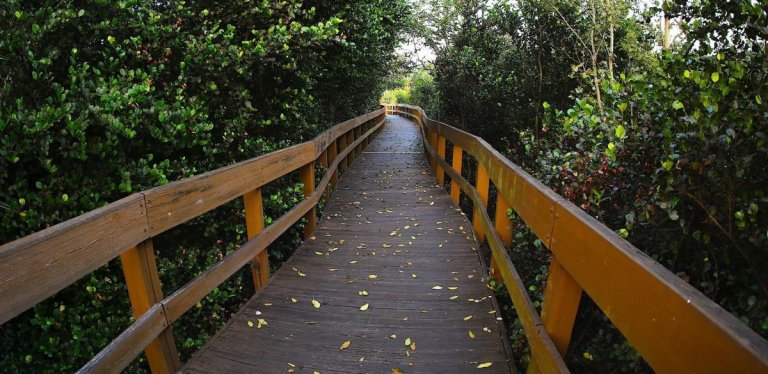
Hiking & Trails
Hiking & Trails See the Sights, One Step at a Time…

Now is the perfect time to get to know The Palm Beaches’ natural side.
Want to get outside more but not sure where to get started? Here are five outdoor excursions perfect for beginners, but that any nature lover will enjoy.
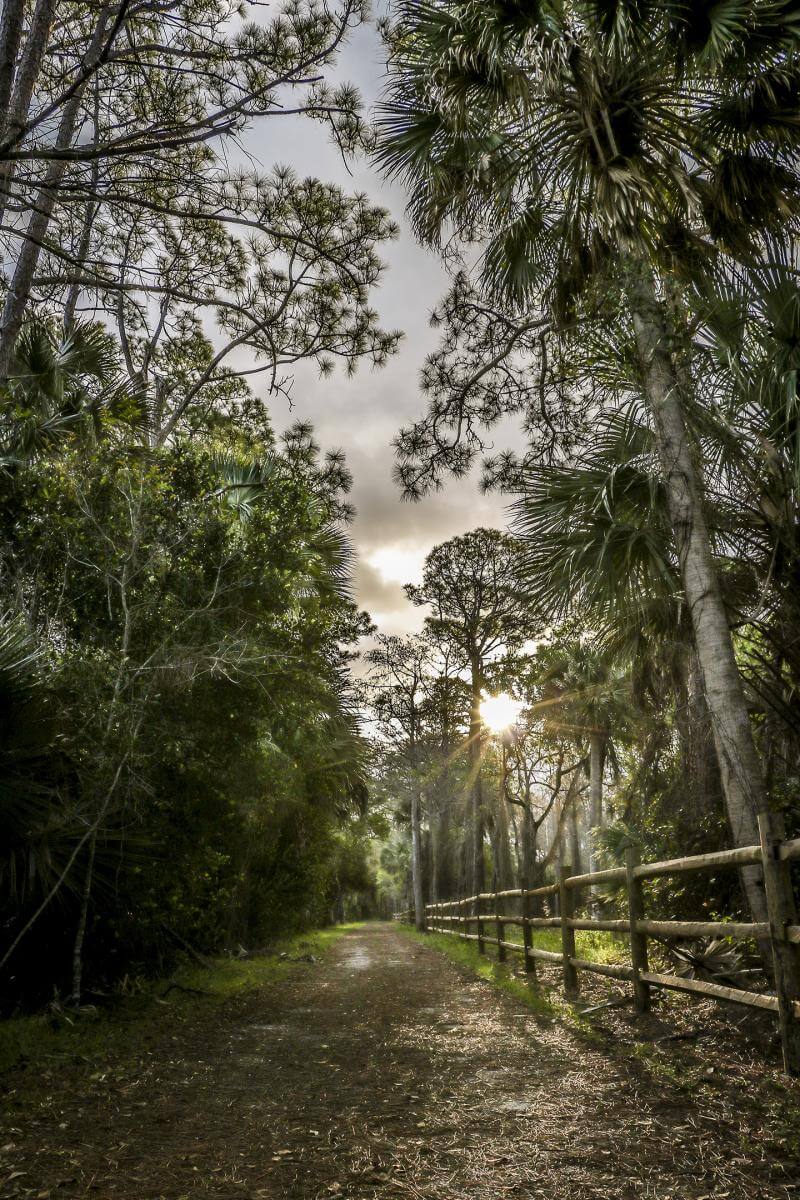
Jeaga Wildways, a system of four multi-use trails, connects 165,000 acres of public lands in northwestern Palm Beach County. The trails offer hikers, bicyclists and equestrians access to some of the area’s most scenic natural treasures. Beginners may want to check out the 1.5-mile portion of the Historic Jupiter Indiantown Trail that runs through Cypress Creek South Natural Area in Jupiter. The trail runs through slash pine woods, freshwater wetlands and cypress swamps. Stop at the wetland observation platform to look for wading birds searching the waters for food. An additional .75 miles of trail is available for bicyclists to explore and includes a stop at the fishing pier. Want to keep exploring? Cypress Creek South Natural Area connects with Riverbend Park, where you can travel more than 15 miles of hard-packed shell trails. Don’t have a bicycle? No worries. You can rent one at Jupiter Outdoor Center in Riverbend Park.
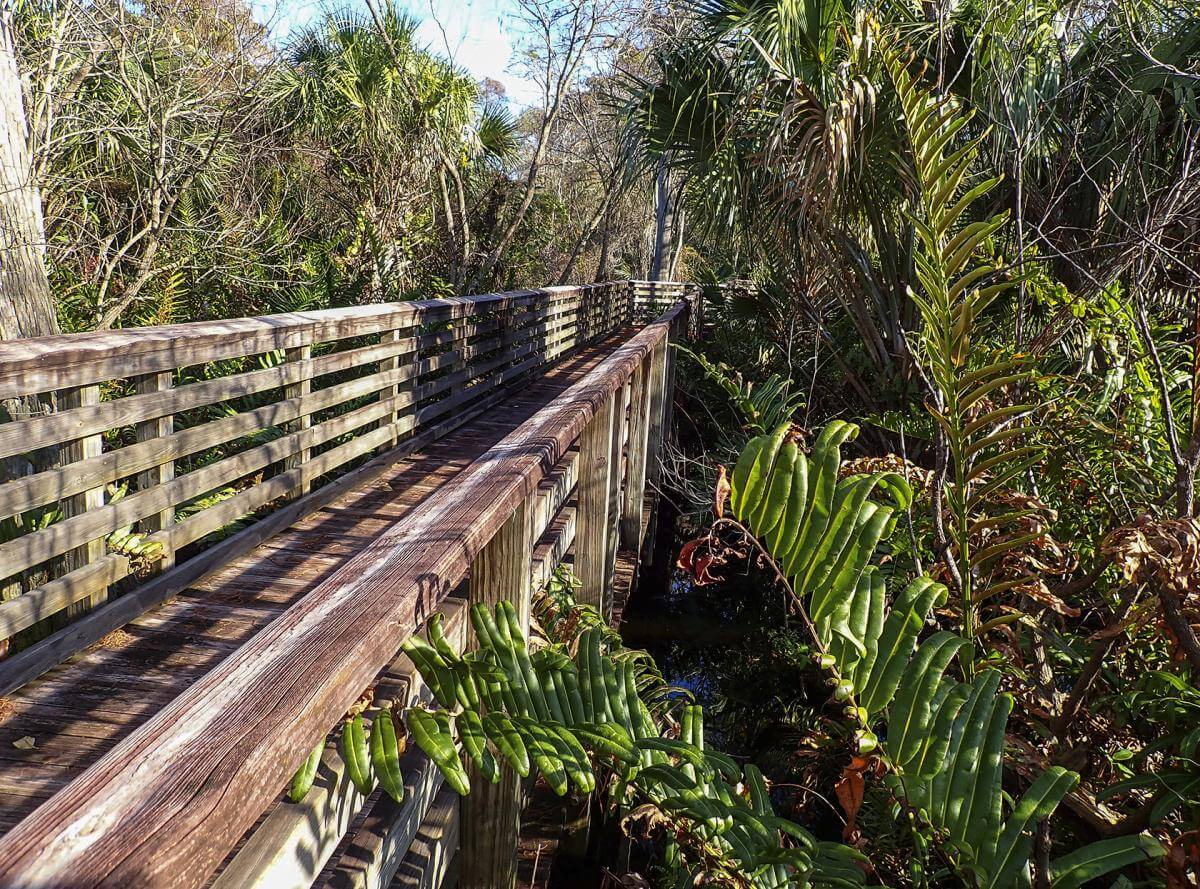
For those who want to stretch their legs a bit, but not travel too far, check out Frenchman’s Forest Natural Area. This 158-acre natural area in Palm Beach Gardens protects mangrove, live oak, slash pine and cypress habitats. All these natural wonders are on display along a 1.5-mile, round-trip hike. Follow the paved walkway that starts by the information kiosk in the parking lot. Stop by the covered observation platform to view a mangrove forest planted almost two decades ago by volunteers. Then, make a right at the dirt maintenance road and follow the yellow blazed markers north. Here, hikers will be travelling on a more uneven surface. After walking under oak and slash pine trees, make a right on the red blazed trail to experience the cypress swamp. A boardwalk through tall cypress trees allows hikers to experience the swamp without getting their feet wet. This is also the turn-around point for the 1.5-mile hike. Those looking to see more can hike several other trails in the natural area. Be sure to grab a trail guide at the information kiosk for a map, or find the trail map on your phone at pbcnaturalareas.com.
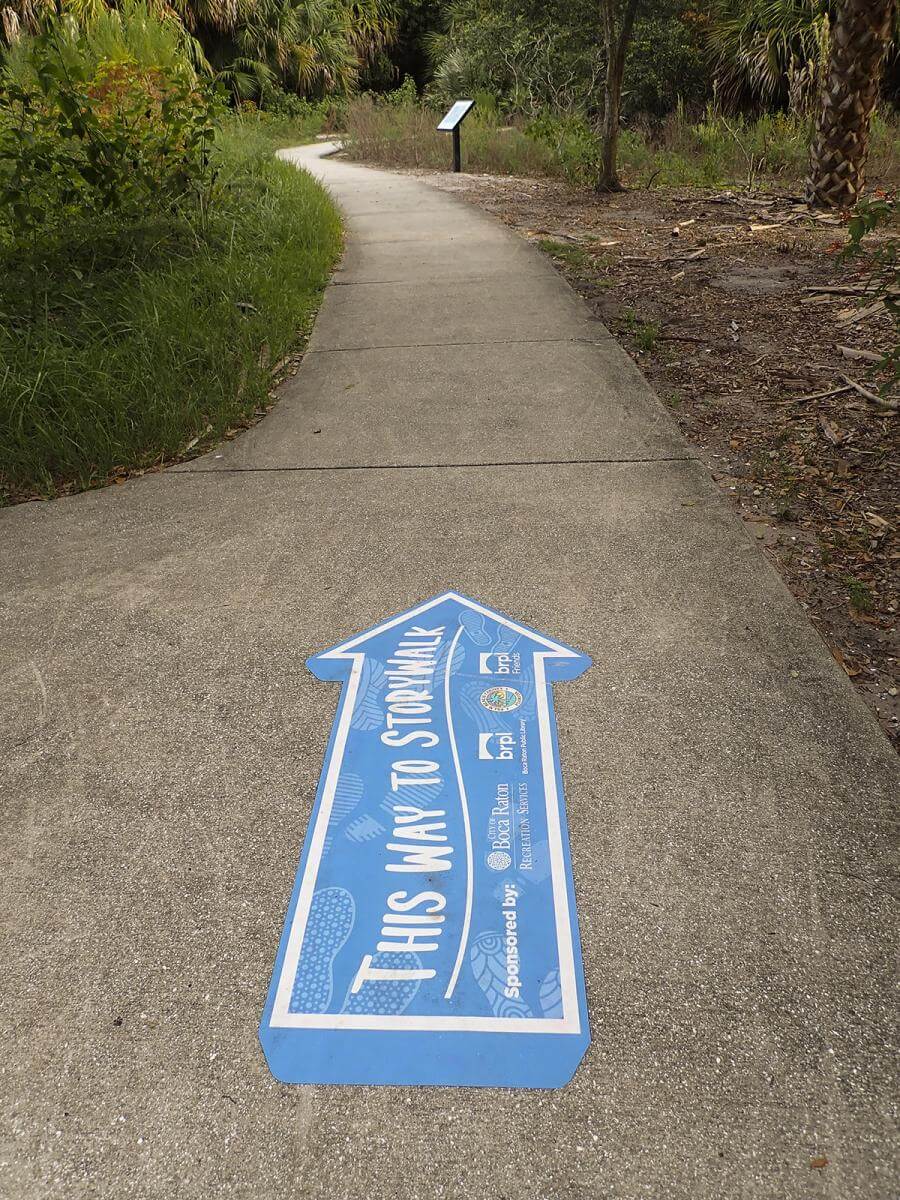
Exploring nature with a stroller or wheelchair can be difficult. Luckly, Pondhawk Natural Area in Boca Raton has a paved walkway that allows easy access throughout the site. The natural area is located adjacent to the Boca Raton Spanish River Library. Park at the library and take the bridge across the canal to the multi-use trail that runs along Blue Lake. The entrance to Pondhawk Natural Area is along the western edge of the lake. The .71-mile walkway passes by a restored wetland full of sawgrass and has a covered observation platform that offers a nice view. Other habitats along the way include open scrub lands and slash pine woods. The walkway also is home to StoryWalk. This project – organized by library staff to encourage fitness, reading and getting outdoors – showcases a children’s book on panels along the walkway. Don’t let the words “children’s book” fool you – StoryWalk is enjoyable for all-ages. Be sure to grab a trail guide from the information kiosk at the entrance to Pondhawk Natural Area for more information about the plants and animals that call the site home.
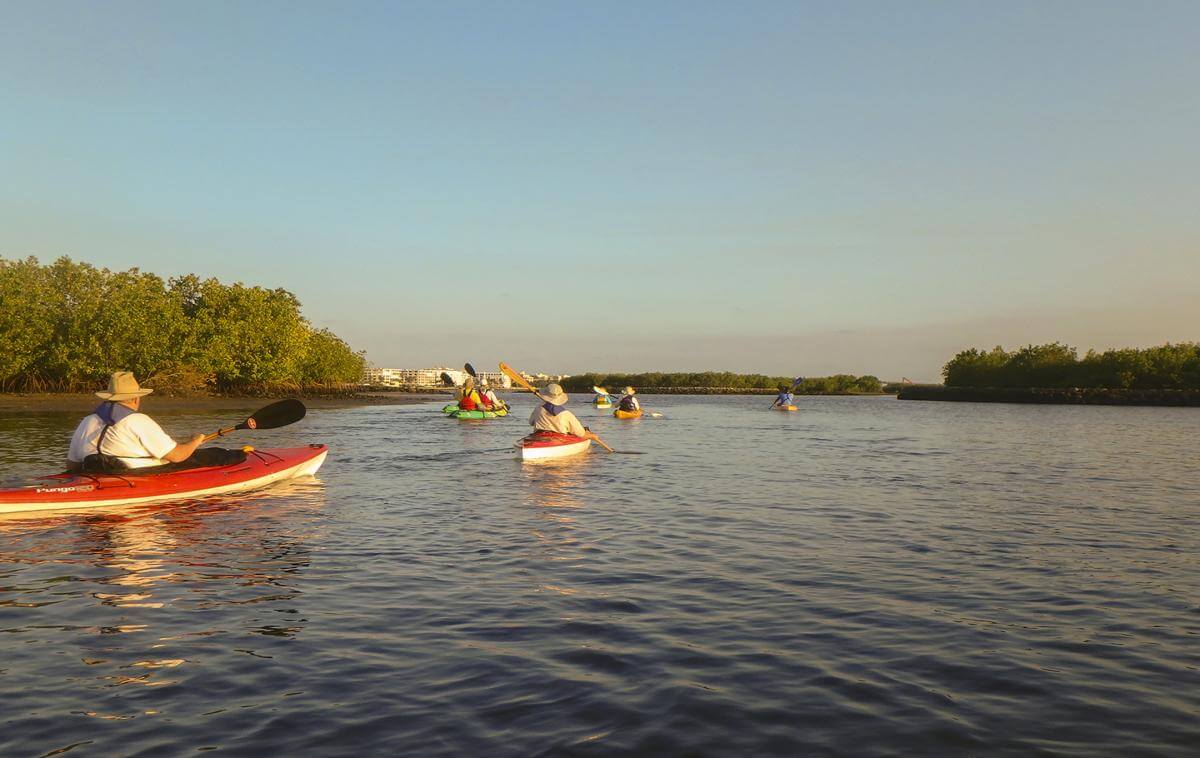
Spanning 20 miles from North Palm Beach to Ocean Ridge, Lake Worth Lagoon is Palm Beach County’s largest estuary. Ocean water flows in through inlets and mixes with freshwater from canals that drain over 350,000 acres of land. This mixture of freshwater with saltwater creates a critical habitat for a wide variety of plants and animals. Since the late 1990s, the Department of Environmental Resources Management (ERM) has worked to restore lost habitat and improve water quality by restoring hundreds of acres of habitat in the lagoon. Snook Islands Natural Area is one of those restoration projects. ERM created several islands in the waters adjacent to Lake Worth Beach Golf Club. The islands are home to 11 acres of mangroves, 2 acres of oyster beds and 3 acres of salt marsh grass. The islands also offer protection from waves generated by boat traffic in the lagoon, making this a great place for beginners to get a feel for kayaking. As you paddle, keep an eye out for white ibis foraging for fiddler crabs on the mangrove mudflats. During the winter and early spring, you might see the nose of a manatee or sea turtle break the surface. If you have your own kayak, you can access the water from the fishing pier on the north side of the Lake Worth Beach Bridge. If you need to rent a kayak, Kayak Lake Worth can help you out. They are located at the Lake Worth Beach Golf Club and launch from the Beach Club Restaurant.
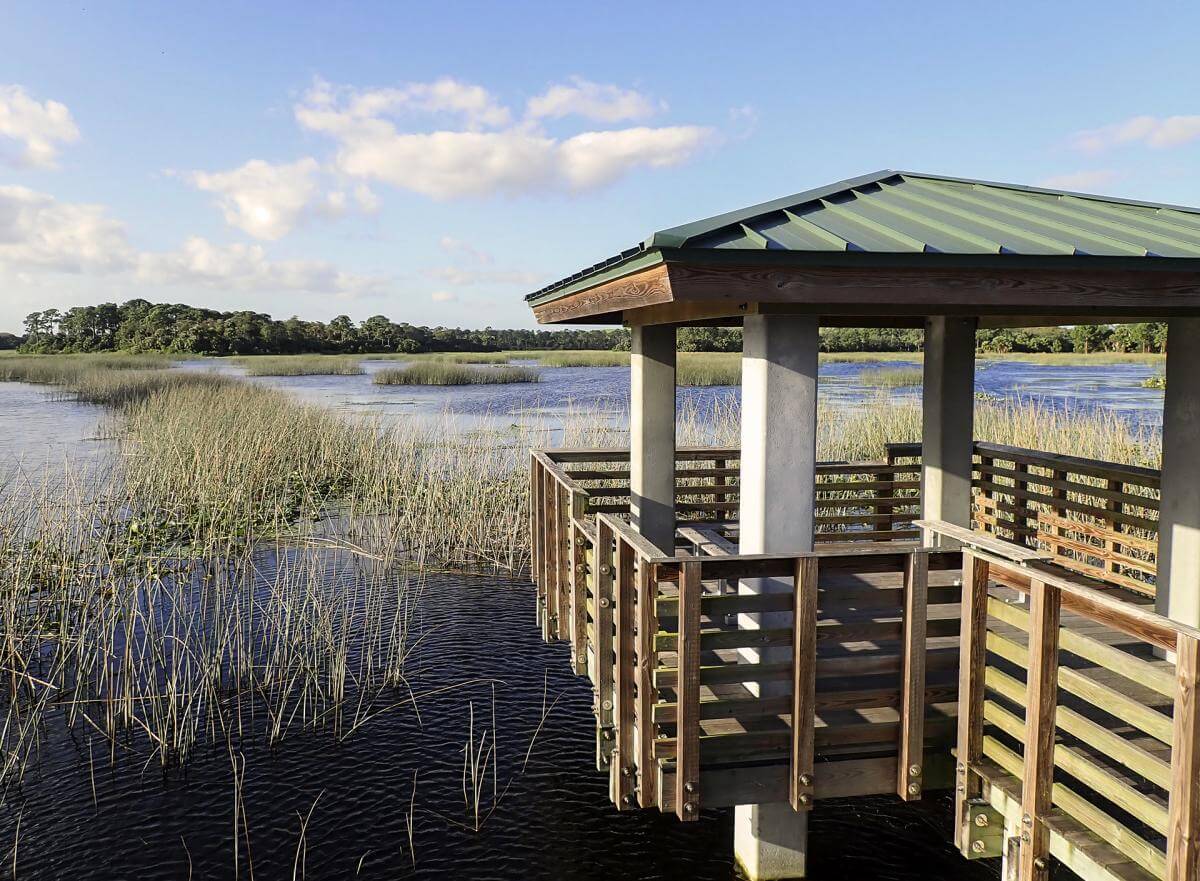
The 548-acre Winding Waters Natural Area in West Palm Beach is a birding hot spot. The natural area protects slash pine woods and a 165-acre freshwater marsh. This combination of trees to shelter in and waters to hunt in attracts a wide variety of birds – from small, brightly-colored palm warblers looking for insects in the treetops to majestic herons and egrets stalking fish in the wetlands. You might also spot birds of prey including ospreys, bald eagles, snail kites, great horned owls and red-shouldered hawks. The best part about Winding Waters is that you don’t have to travel far to see this avian air show. Follow the Wetland Trail south from the parking lot for approximately .3 miles to get to the boardwalk and covered observation platform. While on the hunt for bird life, visitors should also watch for alligators, butterflies and dragonflies. If this short birding adventure isn’t enough, you can explore more than 5 miles of trails at Winding Waters. So, grab your binoculars and come out to meet some new feathered friends.
Find a full list of designated Natural Areas in The Palm Beaches at www.pbcnaturalareas.com.

Hiking & Trails See the Sights, One Step at a Time…
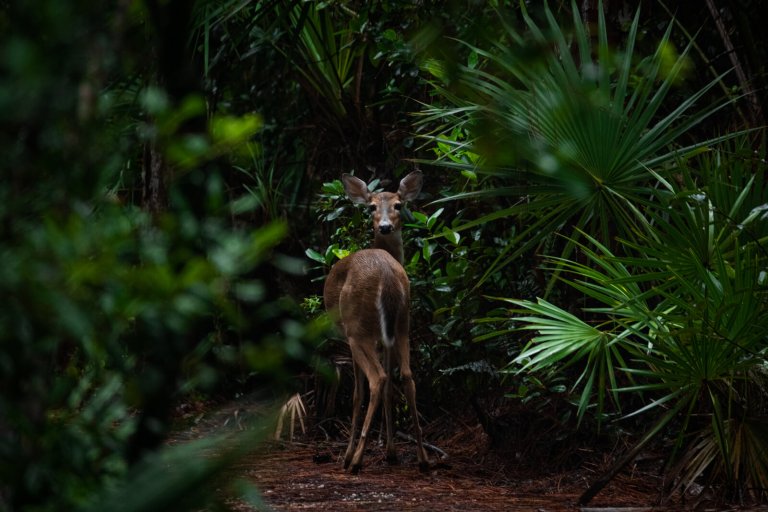
Hiking in The Palm Beaches An exciting day of getting…

Endless Family Fun: Kid-Friendly Activities in The…
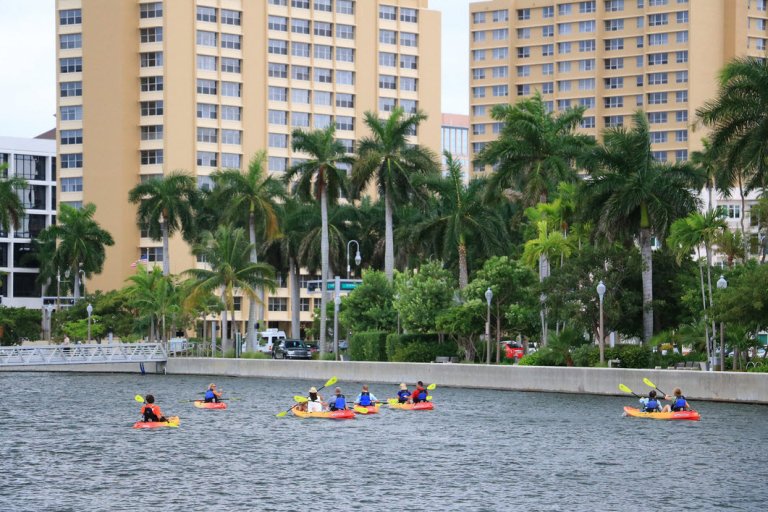
Nature as Your Gym Enjoy the outdoors while incorporating…
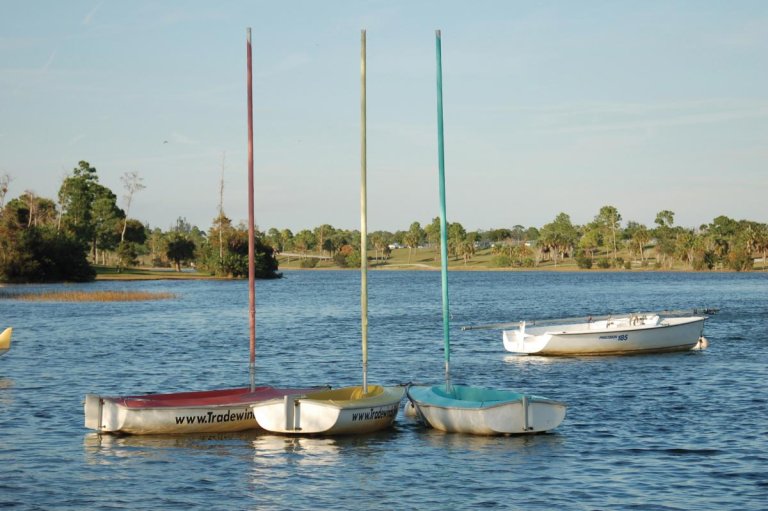
Wheelchair-accessible Nature Trails in The Palm Beaches Discover…
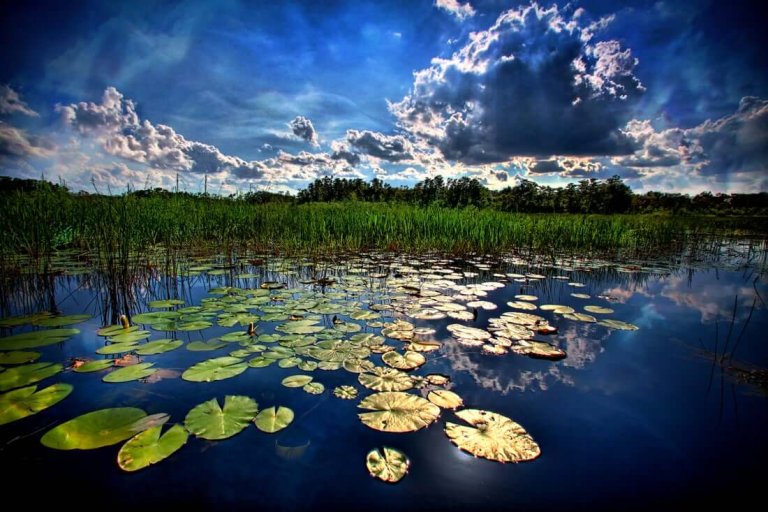
24 Free (or Nearly Free) Things to Do in The Palm Beaches…
Browse lodging options in the one, the only, the Palm Beaches and discover America's First Resort Destination in sunny South Florida.